Mothers of Gunned-Down Children Demand Common-Sense Firearms Laws
Last week thousands of mothers, grandmothers, sisters, daughters and others marched in 200 rallies and 47 states across the country to protest our nation’s lack of common-sense gun laws. Here are the words of a few of them.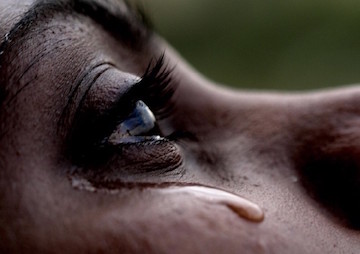 Anil kumar / CC BY-ND 2.0
1
2
Anil kumar / CC BY-ND 2.0
1
2
Orange is the color that hunters wear in the woods to avoid being shot by accident. Orange was the color worn by the mourning friends of Hadiya Pendleton, the 15-year-old Chicago student who was shot and killed only one week after performing with her high school band at President Obama’s second inaugural parade. Orange has become the color of a movement to end gun violence in America. It is the color that marched across our country on National Gun Violence Awareness day, on June 2, to stop more children from being shot.
Last week thousands of mothers, grandmothers, sisters, and daughters (some accompanied by fathers and brothers) marched in orange attire in 200 rallies and 47 states across the country protesting our nation’s lack of common sense gun laws. In San Francisco approximately 200 marched across the Golden Gate Bridge. The marchers were white, African-American, Latino, young, and old, rich and poor, all of them brought by a common desire to end the violence. “I just feel so helpless,” said one mother, “I thought I can do this.”
The marches were organized by Moms Demand Action, Everytown For Gun Safety, and Wear Orange.
Their demands for “common sense” gun laws include: ending open carry laws (especially in places like grocery stores and college campuses), promoting responsible gun ownership (smartguns, gun safes, and safety catches), banning sales of semi-automatic weapons, expanding universal background checks, taxing bullet sales, and increasing gun safety education.
Although even Newtown’s elementary school massacre could not prompt Congress to stand up to the NRA for tougher gun laws, the Brady Campaign, Everytown, and Moms Demand Action continue to push for state and federal laws that will make it harder for guns to reach the hands of people with mental illnesses, violent histories, or children.
Tragically, the day before these protests, there was yet another college shooting, this time at UCLA; this has become our nation’s new normal. Everytown has been compiling statistics on a map of the US, flooded with red dots, to signify all the schools (from elementary schools through colleges) where blood has been shed, including names of all the victims. Since 2013 there have been 186 school shootings; that’s an average of one a week. Every day in the US, an average of 33 people are murdered with guns, while another 53 die from gun accidents or suicide.

Clare Senchyna marched for her son Camilo-Senchyna-Beltran, 26, an EMT who was shot when he stepped in between a friend and a stranger, on Mission Street, in San Francisco, trying to break up a fight. According to Ms. Senchyna, who worked for 30 years as a health worker, most recently at SF General Hospital, “Camilo was out celebrating having finished paramedics school on December 7 2014, and he was shot by a stranger, a 21-year-old with a gun. I was trying to figure out why this had happened and the only thing I could think of was the accessibility of guns.” For her the solution is, “We are going to change the laws, starting with closing all the background check loopholes.”

Elizabeth Proctor marched for the students who were shot at UC Santa Barbara where six people were killed and seven severely injured in a shooting rampage in 2014. Proctor marched in gratitude, one of the few mothers not in mourning, because her daughter had narrowly evaded harm that day; but she also carried the weight of knowledge that other mothers had not been so lucky. She wore a flouncy orange skirt and carried an orange parasol in solidarity with them. “My daughter, although she was not harmed, she was very close to where several people were shot and killed in Santa Barbara,” said Proctor. “She was directly going to be taking the path where he (the shooter) shot in three different rounds, and the only reason why she wasn’t there was because she went back in for tea and toast.”

Jane Holt “marched” in her wheelchair for the youths she has seen injured by gun violence at San Francisco General Hospital, where she worked for years as a nurse practitioner. From her wheelchair, Holt marched her legs along the ground for the full two-mile bridge span (back and forth) to keep pace with the other protesters. “There’s been a lot gun violence where I worked. I think we need better laws. We need better regulation. And we need people to realize that we don’t need semi-automatic weapons for anything, not even hunting.”

Paulette Brown marched for her sixteen-year-old son, Aubrey Abraska, a student at Gateway High and a basketball player, who was shot 30 times with a semi-automatic gun. His mother continues to hope for a change in our nation’s gun laws. Brown handed out fliers in hopes that the killers will be caught and brought to justice. “I have three girls, he was my only son. I had to walk across the stage and receive his diploma in death. He was a good boy.”
Abraska was on his way to work when he saw men with guns moving toward another group of youths. Brown told SocialEarth, “He saved people’s life that day. He did what his mother told him to do. He said, ‘Run!’ and everybody ran. Who was left? My sixteen-year-old boy. They shot him 30 times with a semi-automatic gun.”
Your support matters…Independent journalism is under threat and overshadowed by heavily funded mainstream media.
You can help level the playing field. Become a member.
Your tax-deductible contribution keeps us digging beneath the headlines to give you thought-provoking, investigative reporting and analysis that unearths what's really happening- without compromise.
Give today to support our courageous, independent journalists.

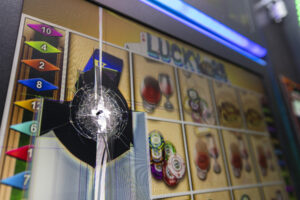
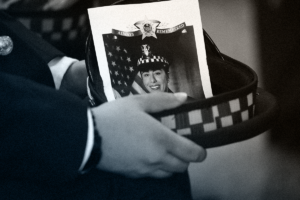
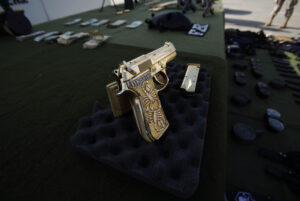
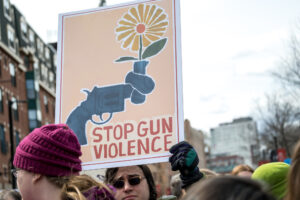
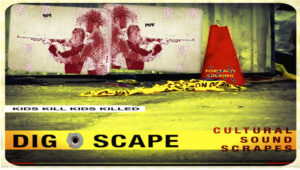



You need to be a supporter to comment.
There are currently no responses to this article.
Be the first to respond.